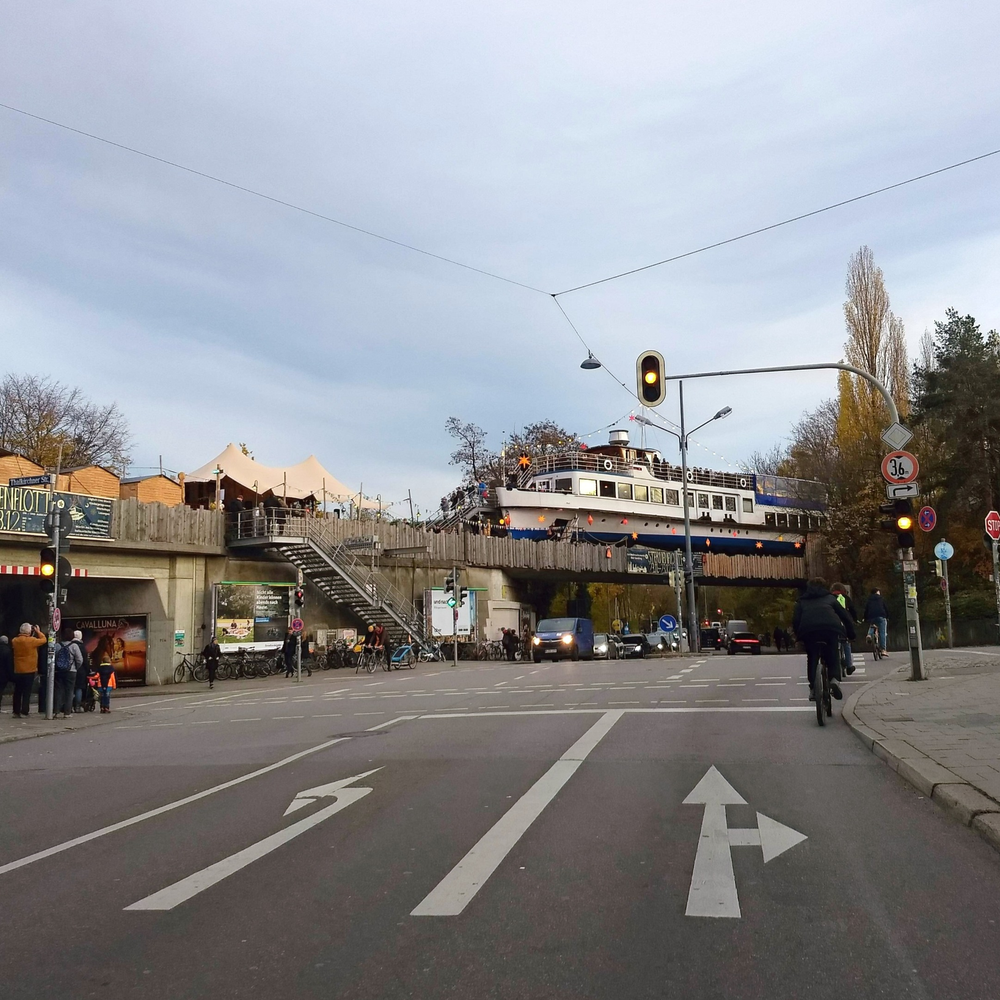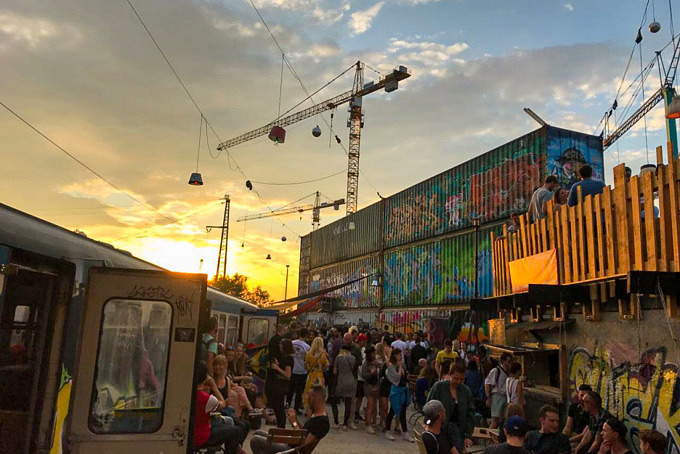Artistic scenes and the night life participate in the reputations of cities and develop their attractiveness. Munich is an extremely dynamic city but why is it said to be boring?

Berlin vs Munich
The project Make Munich Weird launched at the Technical University of Munich by the ARI Research Incubator brings to the headlines the following observation: Creative companies prefer spending their free time in Belin than in Munich even though, here, the opportunities are countless. What did Munich miss out on?
We always hear of Berlin and all the incredible clubs and galleries there. Even if this could sound quite futile it actually is an argument attracting companies and start-ups who look for this creative environment. Prof. Thierstein from the TUM gave an insight in such a correlation during the opening event of the project at university: The creative economy, as Richard Florida describes it, is now driving European countries. This relies on innovation in all fields and is closely linked to tech start-ups and designers. To foster this innovation Richard Florida also develops the theory of “the world is spiky”: creative companies look for a creative environment to encourage the exchange of knowledge and promote inspiration. This means that creative people go where creative people are. This is where Munich struggles.
I often hear from new inhabitants that Munich is boring or that there is nowhere to party well. Apart of course for the Oktoberfest which ensures a worldwide reputation of the capital of beer, it is still a very traditional reputation which doesn’t appeal to young, alternative generations. This reputation is a drawback for the young companies which Munich tries to attract in order to diversify it’s economy. On the other hand, in the past Munich was “the place to be” for many milieux. In the 70’s – 80’s, Freddy Mercury felt home in Munich and the Musicland Studios, situated in the basement of the Arabella Sheraton Hotel
and founded by Giorgio Moroder, produced superstars such as Queen, The Rolling Stones, Led Zepplin or David Bowie. So what is wrong now? It is difficult to understand what makes a reputation of a city, but let’s explore possible explanations for this situation.
An invisible sub-culture
Actually when one searches for creative events in Munich, calendars are full and quite a few dynamic spaces are busy every weekend. An exemplary case was the one of the Lovelace, self-defined as “A happening place” which hosted a hotel, a bar and a club. This hybrid space linking creative actors but also influencal investors was an interesting insight in opportunities for creative locations in Munich. Unfortunatly it had to close as it’s lease expired. The Art environment is also very well sustained with the multiple contemporary art galleries and more alternative exhibition space. An example is the Kunst Block Balve which organizes exhibitions of upcoming artists followed by techno parties. Opportunities are not really missing! So if the creative offers are not absent, what could be reasons for such a struggle? I can only suggest some of those challenges as this is such a complex subject which of course does not have only one answer.
This problematic is very closely linked to urban planning themes as it has directly to do with the importance of those spaces in the city. The heavy pressure on land costs in Munich forces such alternative projects to be pushed on the outskirts of the cities as they are not lucrative enough to acquire land in the centre where investors fight to build the next offices and housing building. Even the temporary usage of buildings or land often occupied by such projects is threatened as ground have little resting time before they are redeveloped. For example the famous Bahnwärter Thiel, a night club and event space built in container and train wagons, a typical alternative aesthetic, is condemned to close soon for the redevelopement of the site even though it is not lacking popularity. By forcing these projects to the outskirts, the centre shows little sign of a creative culture and this artistic population is hidden away in dispersed locations. This lack of artistic density results to an impression of emptiness and the feeling of not knowing where to go to find such an environment.

Make Munich openly Weird!
I believe Munich strongest identity is outdoor spaces. Despite the stress on land costs, open spaces have been maintained and are countless through the city. These large areas can be the scene of many event and in fact, they are! The most striking example of temporary events in Munich is of course the Oktoberfest. The Theresienwiese, the 42 ha plaza welcoming the event every year, is the theatre of a two weeks completely dismountable city and hosts also other smaller events such as the Frühlingsfest or a large ethic winter market. This culture of open air events reveals itself in many other occasions as soon as the nice weather is back. Street festivals take place all around the city during the summer as well as secondhand markets, concerts, open-air cinemas, and many others. Munich is definitively an open-air city. So why do the most alternative creative scenes seem to be hidden away dark rooms used only at night? Such festival and day events schould be an exhibiton of all cultures present in Munich, they should give the opportunity to the larger public to witness this in the corner of a park, in an inner-courtyard or on the river shores. The possible locations are countless. Events like The Street Life Festival allow all sorts of associations to showcase their activities on a main avenue for a whole weekend. Despite the short schedule, this enables locations to get known by the wider public and advertise their events. Such initiatives are to explore in order to reinforce the specificity of Munich and allow it to develop its own creative identity without having anything to envy to Berlin!

To look forward to:
A new “Subculture” hotspot called der Tatzelturm, will open in the coming years on an unconventional plot under a bridge of the A9 Motorway. The two founders who are already influent figures in Munich’s creative scene have the ambition to create a next generation creative space which would combine many fonctions such as artists workshops, galleries, a night club, community activities and maybe more! This space like no other has definitely the potential to act as a Pilot-project for the creative and weird future of Munich!
Picture by David Süß, Florian Schönhofer, Louis Grünwald
More about it here and picture source: https://muenchen.mitvergnuegen.com/2020/tatzelturm-projekt-subkultur/
References
- https://www.makemunichweird.com/
- Workshop Make Munich Weird // Vision & Drinks, 29.02.20
- Why Creativity is the New Economy – Richard Florida, 2012, Youtube, https://www.youtube.com/watch?v=VPX7gowr2vE
- To be up to date on all creative events I can recommend a golden mine of ideas: https://muenchen.mitvergnuegen.com/



hi, your style is so good.Following your articles.